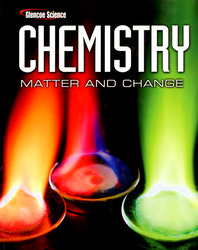1 2 molecule by forming the noble-gas configuration of ________.<a onClick="window.open('/olcweb/cgi/pluginpop.cgi?it=jpg::::/sites/dl/free/007874637x/514757/fig8_4.jpg','popWin', 'width=NaN,height=NaN,resizable,scrollbars');" href="#"><img valign="absmiddle" height="16" width="16" border="0" src="/olcweb/styles/shared/linkicons/image.gif"> (16.0K)</a> A) oxygen B) helium C) neon D) xenon 2 <a onClick="window.open('/olcweb/cgi/pluginpop.cgi?it=jpg::::/sites/dl/free/007874637x/514757/fig8_5.jpg','popWin', 'width=NaN,height=NaN,resizable,scrollbars');" href="#"><img valign="absmiddle" height="16" width="16" border="0" src="/olcweb/styles/shared/linkicons/image.gif"> (22.0K)</a> A) 5 B) 6 C) 7 D) 8 3 3 is chloric acid.A) Chloric acid contains no hydrogen. B) Chloric acid does not dissolve in water. C) Chloric acid contains oxygen, and so is an oxyacid. Hydrogen in an oxyacid is not part of the name. D) HCl is more commonly used, and so it is given the name hydrochloric acid over the less common HClO3 4 Binary Molecular Compound
Binary Acid
Contains only two different elements
Contains hydrogen and one other element
Second element uses name + -ide
Uses hydro + root of second element + -ic and acid
A) hydrobromic acid B) hydrogen bromide C) bromic acid D) bromous acid 5 <a onClick="window.open('/olcweb/cgi/pluginpop.cgi?it=jpg::::/sites/dl/free/007874637x/514757/fig8_13.jpg','popWin', 'width=NaN,height=NaN,resizable,scrollbars');" href="#"><img valign="absmiddle" height="16" width="16" border="0" src="/olcweb/styles/shared/linkicons/image.gif"> (33.0K)</a> A) molecular formula B) space-filling model C) Lewis structure D) structural formula 6 <a onClick="window.open('/olcweb/cgi/pluginpop.cgi?it=jpg::::/sites/dl/free/007874637x/514757/fig8_16.jpg','popWin', 'width=NaN,height=NaN,resizable,scrollbars');" href="#"><img valign="absmiddle" height="16" width="16" border="0" src="/olcweb/styles/shared/linkicons/image.gif"> (6.0K)</a> A) one atom donates both electrons to the bond. B) each atom donates one electron to the bond. C) atoms form a double bond. D) atoms share more than one pair of electrons. 7 <a onClick="window.open('/olcweb/cgi/pluginpop.cgi?it=jpg::::/sites/dl/free/007874637x/514757/trigonal_bipyramedal.jpg','popWin', 'width=NaN,height=NaN,resizable,scrollbars');" href="#"><img valign="absmiddle" height="16" width="16" border="0" src="/olcweb/styles/shared/linkicons/image.gif"> (19.0K)</a> A) sp2 B) sp3 C) sp3 d D) sp3 d2 8 <a onClick="window.open('/olcweb/cgi/pluginpop.cgi?it=jpg::::/sites/dl/free/007874637x/514757/trigonal_planar.jpg','popWin', 'width=NaN,height=NaN,resizable,scrollbars');" href="#"><img valign="absmiddle" height="16" width="16" border="0" src="/olcweb/styles/shared/linkicons/image.gif"> (14.0K)</a> A) 0 B) 1 C) 2 D) 3 9 <a onClick="window.open('/olcweb/cgi/pluginpop.cgi?it=jpg::::/sites/dl/free/007874637x/514757/tab8_7.jpg','popWin', 'width=NaN,height=NaN,resizable,scrollbars');" href="#"><img valign="absmiddle" height="16" width="16" border="0" src="/olcweb/styles/shared/linkicons/image.gif"> (29.0K)</a> A) mostly ionic B) polar covalent C) mostly covalent D) nonpolar covalent 10 <a onClick="window.open('/olcweb/cgi/pluginpop.cgi?it=jpg::::/sites/dl/free/007874637x/514757/fig8_25.jpg','popWin', 'width=NaN,height=NaN,resizable,scrollbars');" href="#"><img valign="absmiddle" height="16" width="16" border="0" src="/olcweb/styles/shared/linkicons/image.gif"> (61.0K)</a> A) brittle B) hard C) good conductors of heat D) non-conductors of electricity





